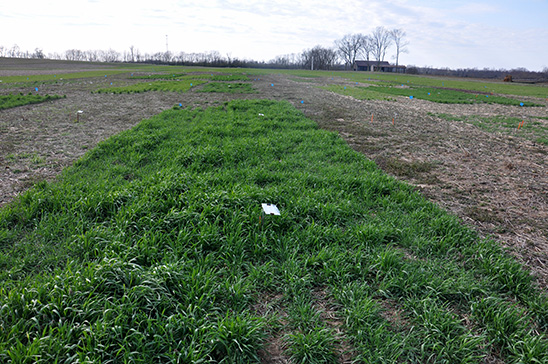UK research seeks to quantify cover crop benefits
UK research seeks to quantify cover crop benefits

Farmers use cover crops to control soil erosion, but they may have additional benefits to the soil and subsequent crops. A group of university researchers, including two scientists from the University of Kentucky College of Agriculture, Food and Environment, are seeking to find and quantify these additional benefits.
Erin Haramoto and Montse Salmeron, UK assistant professors, are part of a team that includes researchers from the University of Nebraska and The Ohio State University. They received more than $460,000 from the U.S. Department of Agriculture’s National Institute for Food and Agriculture for the study.
In the two-year study, they are researching potential benefits of cover crops including weed control, nematode control, soil health, insect impacts, economics and forage quality. They are using a cover crop mixture of rye and oats. The researchers are also using different soybean cultivars, including some with a relatively short growing season, preceding the cover crop mixture. Research plots are at UK’s Spindletop Research Farm in Lexington and in Nebraska and Ohio.
“We are trying to determine whether using an early maturing soybean variety and following with a cover crop earlier in the fall has any additional benefits to the soil, the subsequent crop and the farmer,” said Haramoto, UK weed scientist.
For the study, Haramoto is studying the effects cover crops have on weed suppression, particularly marestail. Some marestail has developed glyphosate resistance and it is widespread in Kentucky.
Salmeron, UK crop ecophysiologist, will gather data from all three states to test predictive models that can estimate soybean yield and the expected time when farmers can plant cover crops in different environments. She will also look at the soybean varieties’ water needs.
“We are expecting a trade-off between using short-season cultivars that could have a yield penalty compared to full-season cultivars, but an earlier harvest and better cover crop establishment and weed control,” Salmeron said. “A predictive model will allow us to explore this trade-off across a number of years to select management options with a better chance of increasing economic returns.”
Plant & Soil Sciences Research


